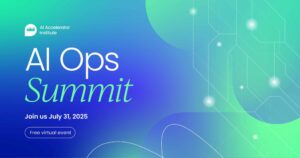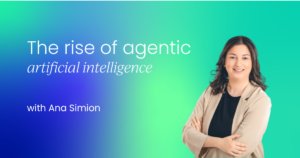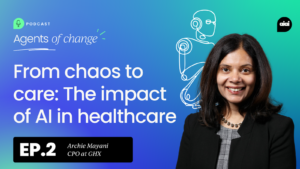[[{“value”:”
At GigaSpaces, we’ve been in the data management game for over twenty years. We specialize in mission-critical, real-time software solutions, and over the past two decades, we’ve seen just how essential structured data is, whether it resides in a traditional database, an Excel sheet, or a humble CSV file.
Every company, regardless of its size or industry, relies on structured data. Maybe it’s the bulk of their operations, maybe just a slice, but either way, the need for fast, reliable access to that data is universal.
Of course, what “real-time” means varies depending on the business. For some, it’s milliseconds; for others, hours might do. However, the expectation remains the same: access must be seamless, fast, and dependable.
The reality of enterprise data management
Let’s talk about the real challenge: enterprise data is hard to work with.
Even when structured, it’s often fragmented across systems, stored in outdated databases, or locked behind poorly configured infrastructure. Many organizations are still running on databases built twenty or thirty years ago. And as anyone who’s tried knows, fixing those systems is a monumental task, often one attempted only once and never repeated. Once bitten, twice shy.
So, how do we give business users the access they need without overhauling everything?
That’s where things get complicated. Enterprises have layered on workaround after workaround: ETL pipelines, data warehouses, operational data stores, data lakes, caching layers, you name it. Each is a patch or workaround designed to move, manipulate, and surface data for reporting or analysis.
But every added layer introduces more complexity, more latency, and more chances for something to go wrong.
Why traditional BI is no longer enough
For years, Business Intelligence (BI) has been the go-to solution for helping users visualize and interpret data. Everyone here is familiar with it; you probably have a BI tool running right now.
But BI isn’t enough anymore.
While it serves a purpose, traditional BI platforms only show a limited slice of the full data picture. They’re constrained by what’s been extracted, transformed, and loaded into the data warehouse. If it doesn’t make it into the warehouse, it won’t appear in the dashboard. That means critical context and nuance often get lost.
Analysts today need more than just static reports. They want to slice and dice data, follow up with deeper questions, drill down into specifics, and do all of this without filing a ticket or waiting days for a response. The modern business user expects the ability to interact with data in real time, in the flow of work.
So, the question is: can we actually enable that?
The evolution toward smarter data access
We’re in the middle of a major shift. While BI isn’t going away, traditional reports still serve their purpose; we’re clearly moving into the next phase of data interaction.
Natural language processing (NLP), AI copilots, and more dynamic querying interfaces are emerging. The goal? To simplify access. Imagine this: connect directly to your database, ask a business question in plain English, and get an instant answer.
That’s the vision.
And to a surprising extent, we’re starting to see it come to life. Consider the rise of Retrieval-Augmented Generation (RAG). How many of your companies are already experimenting with RAG? From what we’ve seen, that’s about 60–70%.
RAG is an exciting technique, especially when dealing with unstructured or semi-structured data. But let’s park that for now. We’ll return to it shortly.
Just ask: Making data truly accessible through NLQ
At GigaSpaces, our motto is simple: just ask.
We believe business users, whether they’re technical, semi-technical, or purely business-oriented, should be able to ask a question and get an answer instantly. If a CEO is heading into a board meeting and needs data on performance, risk, or opportunity, they should be able to ask for it directly.
Natural language querying (NLQ) makes this possible.
Imagine asking: What are my high-risk portfolios? Or: Show me client investment distribution. Or: How are we performing on compliance monitoring? No SQL, no dashboards: just a question, and an answer.
Interestingly, one of our recent prospects was from procurement. They weren’t the obvious audience for a data tool, but once they saw what NLQ could do, they wanted in. Why? Because they needed to compare vendor pricing, pulling internal data and matching it against public sources. It turns out, everyone in the organization wants fast, intelligent access to data.
Technology is great, but business value comes first
Let’s start with something even more important than the technology: business value.
As technologists, it’s easy to get swept up in the excitement of new tools. We play, we experiment, we test with R&D. But at the end of the day, what really matters is this: does it deliver value to the business?
If 80% of the organization adopts a tool, that’s great, but only if that adoption translates into measurable outcomes. Are we saving time? Reducing costs? Increasing decision velocity?
Too many tools are “nice to have.” They make your day 1% easier, but that’s not enough to justify the investment. With NLQ and technologies like RAG, we’re not just adding convenience. We’re flipping the paradigm.
With eRAG we’re turning everyday users into power users by letting them interact with data directly. That’s a big deal, especially when most organizations are still stuck in the mindset of “we’ve got a few reports, it is what it is.”
RAG and similar techniques are changing that. They’re making data feel accessible again. But here’s the catch: most RAG implementations are built on unstructured or semi-structured data, and the results aren’t real-time. You vectorize data, you query it, but you’re essentially querying yesterday’s data.
That’s fine for some use cases. But for healthcare, asset management, or retail? Yesterday’s data isn’t good enough. In those domains, a delay of even an hour can be too late.
So, how do we bridge that gap?
Beyond RAG: Table-augmented generation and metadata intelligence
There is a better way.
One emerging approach is what some are calling Table-Augmented Generation (TAG). Think of it as applying the principles of RAG, but over structured metadata. We’re talking about vectorizing metadata, using graph RAG to identify relationships and connections, even between tables that aren’t explicitly linked.
It’s not just clever; it’s practical. Behind the scenes, we’re layering in traditional and semantic caching, schema linking, and building a semantic layer that stretches across multiple databases. Users can connect to two, three, or even fifty databases and build a unified semantic map without accessing the raw data.
And no, we’re not building a catalog or implementing MDM. If you’ve ever tried that, you know it’s a nightmare. This isn’t about solving the entire organization’s data taxonomy. It’s about solving for each business unit individually, allowing them to work in their own language, with their own vocabulary and semantics.
This flexibility is key, and yes, AI governance and security are baked in. That’s a whole topic on its own, but worth noting here: it’s not an afterthought.
The product behind all this is something we call Enterprise RAG, or eRAG. It exposes an API that users can integrate directly or call via REST. It’s model-agnostic, cloud-agnostic, and it just works. Check it out in more detail here.
Implementing a semantic layer that learns from users
Here’s the kicker: the solution is SaaS. Whether your data resides on-premises or in the cloud, we connect, extract the metadata, and build a semantic layer using five to seven behind-the-scenes techniques to optimize for comprehension and usability.
From the user’s point of view? All they have to do is ask a question.
Even better, those questions help train the system. When users respond with feedback, positive or negative, it fine-tunes the semantic layer. If something’s off, they can simply say so, in natural language, and the platform adapts.
This isn’t a developer tool. It’s not a Python library. It’s a human interface to structured data, and that’s where the magic is. Accuracy and simplicity, combined.
Whether you choose to build this kind of system yourself or opt for a ready-to-go solution, usability is key.
Final thoughts
As enterprises wrestle with fragmented data and rising expectations for speed and accessibility, the future of data management is clear: it’s about empowering every user to get answers in real time, without layers of complexity in the way.
Technologies like NLQ, TAG, and Enterprise RAG are shifting the focus from infrastructure to impact, turning data from a bottleneck into a true business enabler. The path forward isn’t just about adopting smarter tools; it’s about reimagining how people and data interact, so that insight is always just a question away.
Ready to turn your data into answers? Discover how eRAG and NLQ can unlock real-time insight for your team. Reach out to learn more or see it in action.
“}]]
Learn how GenAI helps teams overcome data bottlenecks and unlock real-time ROI from structured data, without ripping out legacy systems.




























